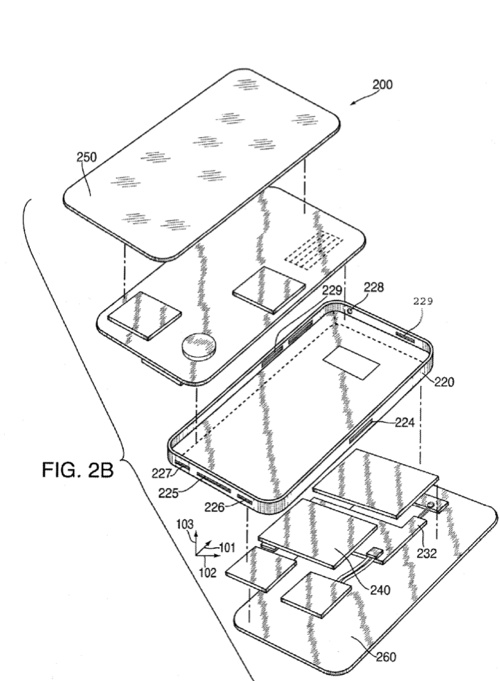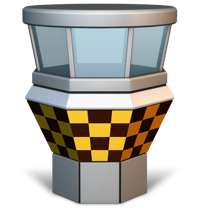An Apple patent (number 20110188180) for a portable electronic housing with outer glass surfaces has appeared at the US Patent & Trademark Office, showing that Apple is considering iOS gadget designs that will simplify repairs.
Improved housings for electronic devices are disclosed. In one embodiment, an electronic device housing can have one or more outer members (e.g., exposed major surfaces), such as front or back surfaces, that are formed of glass. The one or more glass surfaces can be part of outer member assemblies that can be secured to other portions of the electronic device housing. In other embodiments, apparatus, systems and methods for robustly attaching a cover portion of an electronic device to a bottom portion, e.g., a housing portion, of the electronic device are described. The electronic device can be portable and in some cases handheld. The inventors are David Pakula, Richard Hung Minh Dinh and Scott Myers.
Here’s part of Apple’s background and summary of the invention: “Portable electronic devices can be constructed using a variety of different approaches. For example, a ‘bucket’ type approach can be used in which a first housing component serves as a bucket into which electronic device components are placed, and a second housing component serves as a cover for the bucket.
“This arrangement secures the electronic device components between the first and second housing components. As a variation of this, some or all of the electronic device components can be assembled into the cover for the bucket, and the cover can subsequently be rotated into the bucket to close the device.
“Other known portable electronic devices can be constructed by inserting components into a hollow housing element. For example, an electronic device can be constructed using a tubular structure (e.g., a flattened tube or a hollow rectangular tube) into which electronic device components can be inserted. The electronic device components can be inserted into the tubular structure from one or both ends, and connected within the structure.
“For example, one or more circuits inserted from opposite ends of the tubular structure can be connected through an opening for a window in the structure. The structure can be capped at one or both ends to ensure that the components remain fixed within the tubular structure, and to provide interface components (e.g., connectors, buttons, or ports) for the device.
“Unfortunately, however, as portable electronic device continue to be made smaller, thinner and/or more powerful, there remains a continuing need to provide improved techniques and structures for providing housings for portable electronic devices.”
— Dennis Sellers




